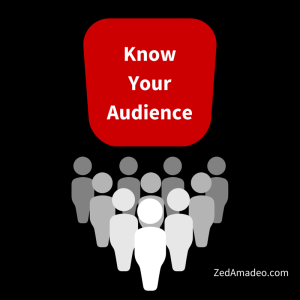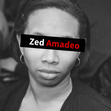Practical Writing Advice: Know Your Audience
How well do you know your audience?
Defining Your Audience
Do you know who you’re marketing your book to? Better defining your audience can help you build a solid marketing plan without spending time on efforts that are unlikely to reach your target audience. Two resources that can help you define your audience are available for free at All Indie Writers:
Target Market Worksheet

From AllIndieWriters
Although aimed at freelance writers, the Target Market Worksheet is also useful for fiction writers. This diagram gives you a visual way to think about the demographics of your target audience, what your audience is looking for, and how your writing fulfills the wants of the audience. The Target Market Worksheet is available for free at AllIndieWriters.
Book Marketing Plan Outline

From AllIndieWriters
This free outline has a section entitled “Your Target Market” that can help you delve into deeper detail about potential channels for reaching your audience. In addition, this plan has sections devoted to other aspects of marketing your book (such as finances and market analysis) that can help you improve your marketing plan. Available on AllIndieWriters.
Social Media
Once you’ve defined your audience, it is easier to create a better social media strategy for marketing your book. Instead of spending excess time trying to market on every social media channel, you’ll likely want to focus on those that is likely to be used by your target audience. Avoid Social Media Time Suck by Frances Caballo (which I previously reviewed) provides great suggestions on how to do this more effectively – for example, if you write Romance, you’ll likely want to use Pinterest to find potential readers.
When defining and reaching out to your audience, here are a couple of things to keep in mind:
Reach out to non-writers
Unless you’re specifically writing non-fiction targeted toward indie writers, you’ll likely want to include non-authors in your readership. While connecting with other authors is invaluable, be wary of ending up in a circle where your entire audience consists only of other authors. Be especially wary of paying for circular advertising services that consist solely of indie authors promoting their work to other indie authors. For a great post on which book marketing channels may be most effective, check out Nicholas Rossis’ Call to Arms post on the topic.
Reach out to non-readers:
After you’ve defined your target readership, you may want to expand your audience to include other potential groups. The Book Marketing Plan Outline provides some space to think about, using the example of children’s books. Instead of only marketing toward readers, an author might want to consider marketing toward parents and teachers as well.Kristen Lamb’s guide to creating your author platform, Rise of the Machines (which I also reviewed and highly recommend) also provides more discussion on this idea. Lamb’s book suggests levering your other interests beyond writing to connect with more potential readers. Connect with others online or join communities that share that interest and share content related to your interests as well. The people that you connect with this way may later become interested in your writing Consider whether there any other potential audiences you might want to include in your marketing strategy.
What techniques or resources have you used to better define your audience?
Liked this post? Feel free to share!
The post Practical Writing Advice: Know Your Audience appeared first on Zed Amadeo.




